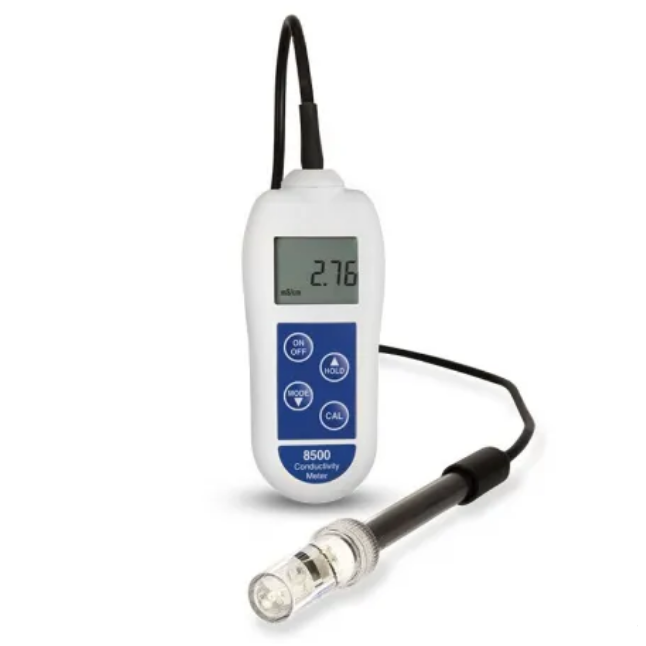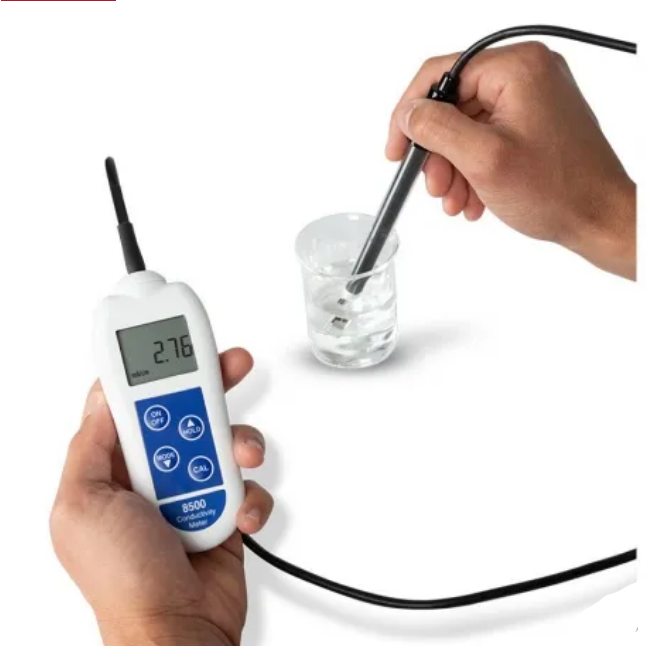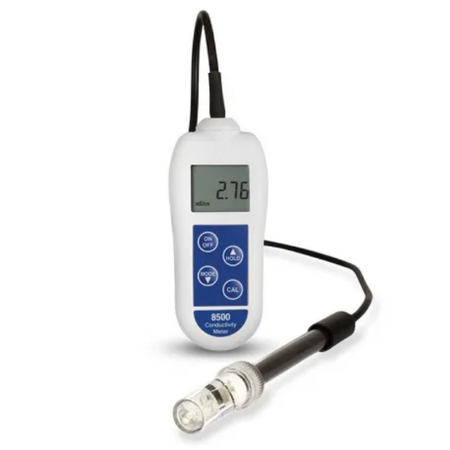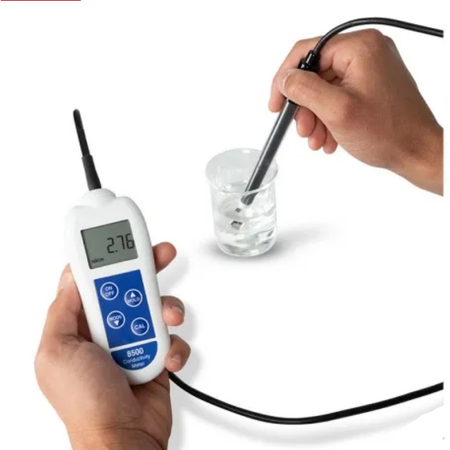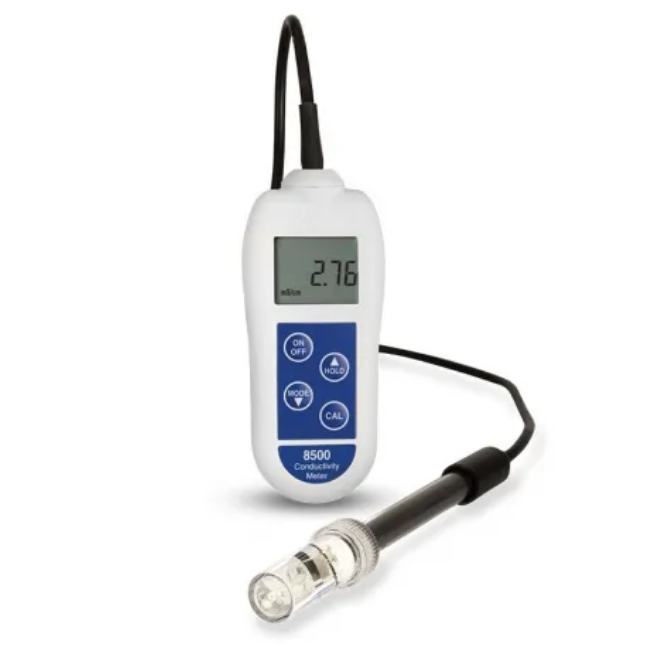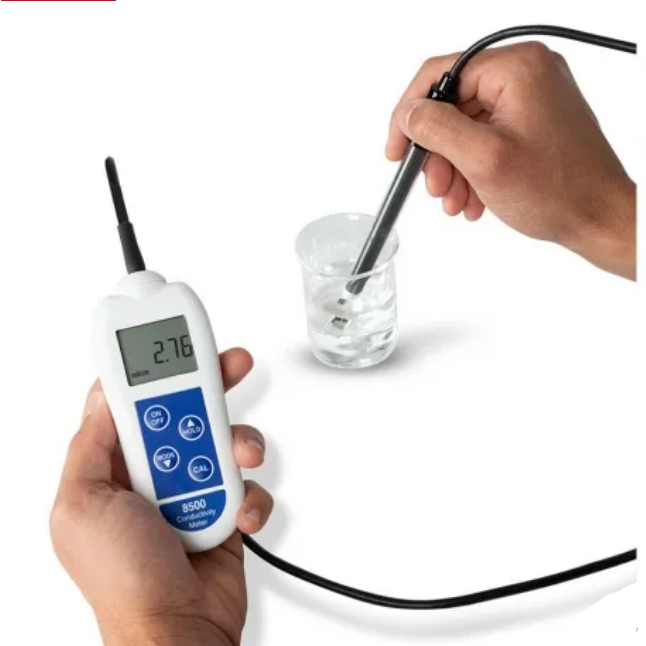8500 Conductivity Meter
Got questions?
Feel free to get in touch

Ask Tony
Description
The new 8500 Conductivity Meter is a three-in-one conductivity tester featuring an easy-to-read LCD display that indicates parts per million over a range of 0 to 3500 ppm with a resolution of 1 ppm, millisiemens/cm over a range of 0.00 to 5.00 mS/cm with a resolution of 0.01 mS/cm, and temperature over the range of 0 to 50 °C with a resolution of 0.1 °C.
Both the ppm and mS/cm readings are automatically temperature compensated over the operating range of 0 to 50 °C, utilising the temperature sensor in the probe.
These conductivity meters are housed in a robust ABS case and powered by three AAA batteries that give a minimum of 5000 hours of battery life.
The unit will power off automatically after ten minutes, maximising battery life.
At the touch of a button, the instrument will recalibrate itself when used in conjunction with the 816-071 calibration solution.
What is the difference between conductivity and TDS meters?
In scientific terms, conductivity tells how well electricity passes through a substance. On the other hand, TDS indicates the amount of dissolved solids within a liquid, accounting for both conductible and non-conductible particles. When measuring conductivity and TDS both conductivity meters and TDS meters pass electricity through a liquid. Conductivity meters can be used to estimate the TDS in a substance.
How do electrical conductivity meters work?
When the probe attached to the conductivity meter is inserted into the solution, an electrical current flows between the electrons inside the probe. If the ion concentration of the solution being tested is high, the higher the conductance will read, which results in a faster current, and vice versa.
Downloads
 |
8500 Conductivity Meter Technical Datasheet |

